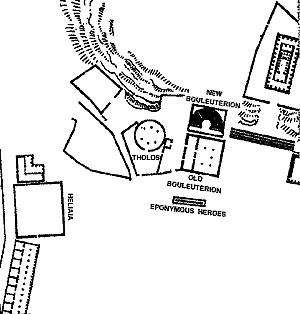

The Agora (from the greek verb ageiro, meaning gather or assemble), was an essential part of the ancient hellenic city. It was the centre of political and economic life, but was also used for cultural, religious and athletic activities. In the historic period the Agora was usually situated at the center of the city or near the port.

Select on the above diagram the location you want to visit.
The history of the Agora of Athens, located at the north-west foot of the Acropolis, originates at the neolithic period and extends to the early Middle ages.
Since the early
Buildings typically connected to the administrative function, were the Old and New Bouleuteria (Council Houses), the Prytaneion (Tholos), The Basileios Stoa, the Monument of the Eponymous Heroes, the Metroon, and the open-air law court called Eliaia.